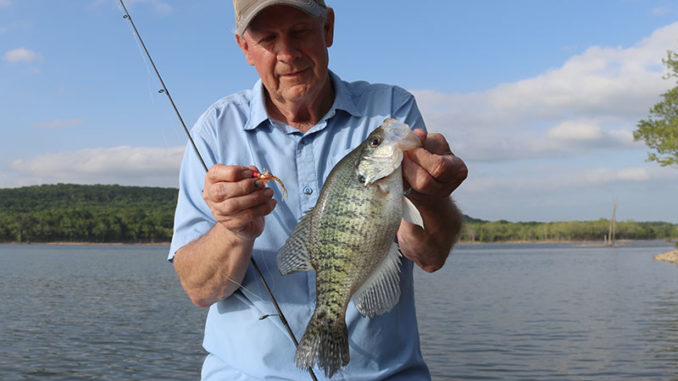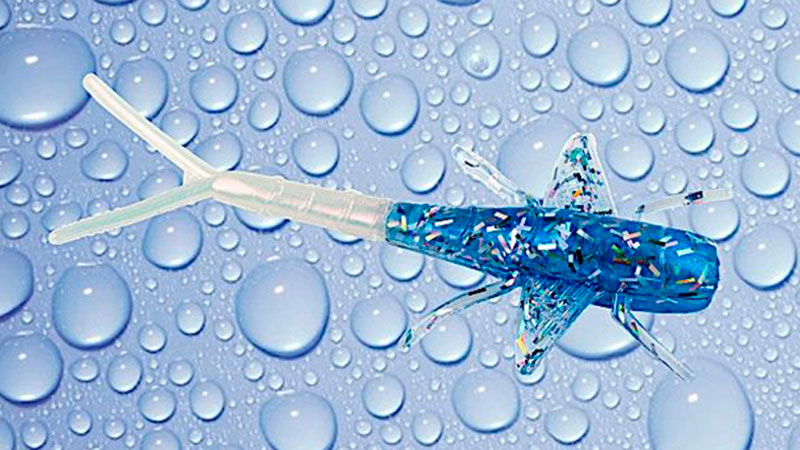
A mayfly that landed on the windshield of a vehicle driven by a veteran artificial lure designer was the inspiration for what has become one of the hottest soft plastics for crappie.
Gary Dollahon of Broken Arrow, Oklahoma, brand manager for Bobby Garland Crappie Baits since 2007, snapped a photo of that winged insect, then took it to the in-house designer at PRADCO Outdoor Brands, Gerald Winters.
As a lifelong fisherman, Dollahon said he always encounters the annual mayfly hatches that so often whip fish into a feeding frenzy, particularly black crappie he believes are more prone to gulp down insects.
Unique design
That was about five years ago, he said as he warmed up to the subject of the Bobby Garland Crappie Baits Mayfly. The soft plastic bait has one of the most unique designs in the industry and, more importantly, based on its success, appeals to crappie or, as much of Louisiana calls them, sac-a-lait.
“It’s a little different,” Dollahon said.
Different? Definitely. With the 2 ¼-inch Mayfly’s elongated tail segmented with outer rings for strength as it tapers to the end featuring twin appendages that wiggle, even at rest, plus the short “wings” near the head that add to the motion, it doesn’t take a wild imagination to recognize the Mayfly for what it represents.
Doug Sikora, an Indiana crappie fishing pro known as the “professor,” said, “It just looks like the things crappie eat, and I think that makes it the most versatile design in the Bobby Garland lineup… and that’s saying a lot.”
Doing the homework
Sikora tipped his cap to the company and gave a big thumbs up to the Mayfly. After all, it’s an insect he has studied a lot, one he knows as “Hex,” short for Hexogenia limbate. Sikora credited BGCB for doing its homework in the insect’s design.
Dollahon appreciated that, noting they studied the insect from larval stage to adult.
“Yes, we did our homework… That’s how we do things at Bobby Garland to ensure anglers catch more crappie,” he wrote in a story posted online Sept. 21, 2022, by Lurenet Fishing Headquarters.
 The Mayfly’s initial prototype came out of the mold in July 2020 and, three more prototypes later, was introduced this time last year at ICAST. The Mayfly has been bugging the sac-a-lait ever since.
The Mayfly’s initial prototype came out of the mold in July 2020 and, three more prototypes later, was introduced this time last year at ICAST. The Mayfly has been bugging the sac-a-lait ever since.
Its popularity was underscored late February through March in north Louisiana, especially on Lake D’Arbonne. Steve Danna of Farmerville, a pro staffer for Bobby Garland Crappie Baits, caught on it and shared it with other sac-a-lait fishermen. Louisiana anglers Shane and Katie Hodge enjoyed them the next day while boating about 40 crappie, including a 1.74-pounder that bit their Mayflys.
In the spring, Mayflys took a toll on the crappie population at Ross Barnett Reservoir in Mississippi, where the hatch was on and crappie fishing success was red-hot, and Lake of the Ozarks in Missouri, to name a few fisheries.
Garland would be proud
Dollahon, a 70-year-old angler, said the late Bobby Garland, would be proud of the Mayfly. Garland, who died in 2006, was a pioneer in the manufacturing of soft plastic artificial lures.
Mayflys are available in 12 colors, including the ever-popular Cajun Cricket. Lead head weights that are most efficient are 1/16-ounce and 1/8-ounce. Bobby Garland’s 1/16-ounce jigheads have a size 2 hook, while the 1/8-ounce model has a size 1 hook.
Dollahon pointed out it isn’t for spring only.
“I think the thing that surprises most people who see the bait as mostly a springtime bait, is that it has been a success in the winter,” he said recently. That’s because it has enough resemblance to a baby shad or minnow to trigger a bite.
At fishing tackle shows, visitors notice the unique bag first, he said, and the product inside does the rest. Fifty Mayflys are in each new style bag featuring a specially designed snap-close hinged lid, pleated sides for roominess and a scented liquid inside the bag that protects the body shape and appendages.


